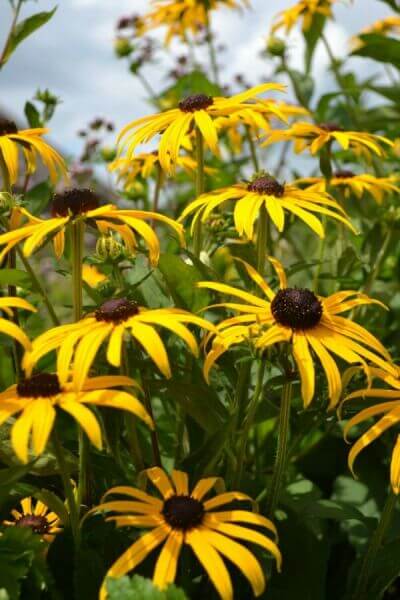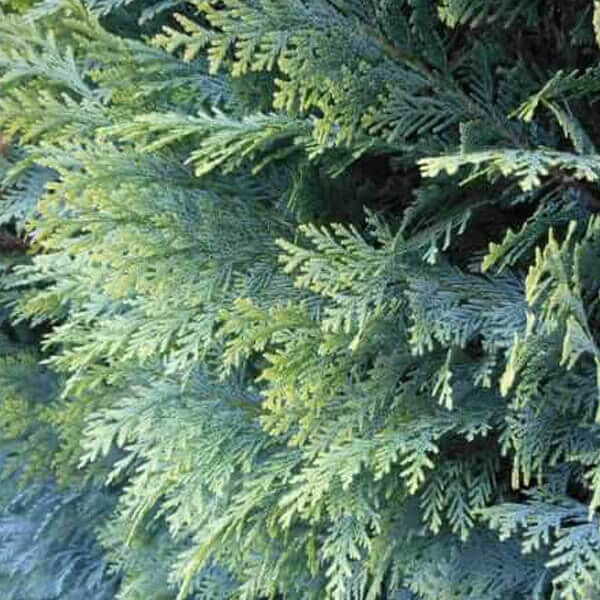Best Hedging Plants For Autumn Hedges
Improve your garden's attraction with lush hedge varieties such as Yew (Taxus), Thuja, Laurel, Photinia, and Bamboo, commemorated for their structural integrity and ecological benefits.
Yew and Thuja supply evergreen coverage and winter resilience, while Laurel provides quick growth and broad, fragrant leaves.
Photinia includes seasonal charm with its vibrant red foliage, and Bamboo provides a low-maintenance, tranquil atmosphere.
These hedges enhance air quality, reduce noise, and develop tranquil, private spaces.
Correct planting, spacing, and upkeep ensure vigorous development and eco-friendly harmony.
Explore how these rich ranges can raise your garden's beauty and well-being.
Key Takeaways
Change Your Garden With Lush Hedge Ranges
- Select Yew for its thick, evergreen growth and unparalleled longevity.
- Go with Laurel for its quick growth and broad leaves, guaranteeing fast personal privacy.
- Pick Photinia for its lively seasonal foliage, which turns a striking dark red.
- Utilize Bamboo for a low-maintenance, winter-hardy hedge with aesthetic appeal.
- Space plants 2-3 per meter and prune routinely for ideal development and health.
Popular Hedge Plants
When changing a garden with rich hedge varieties, it's important to think about popular hedge plants such as Yew, Thuja, Laurel, and Photinia due to their special qualities and advantages.
Yew (Taxus) is extremely respected for its durability and dense, green growth, making it a prime choice for withstanding landscapes.
Thuja is noted for its evergreen foliage and robust winter durability.
Photinia adds seasonal vibrancy with red leaves that darken with time, developing vibrant visual appeal.
Laurel provides fast development and fragrant, broad leaves, ideal for fast personal privacy.
Furthermore, Bamboo is an exceptional option for ambiance, offering a low-maintenance, winter-hardy option that enhances the garden's aesthetic with its classy, swaying walking sticks.
These choices deal with a range of horticultural requirements and choices.
Advantages of Garden Hedges
Garden hedges use a plethora of advantages, making them an important addition to any landscape. These natural barriers are affordable to execute and offer substantial wind security, improving air circulation and adding to noise reduction. The thick foliage of hedges like Thuja and Beech ensures privacy by obstructing visibility, creating a secluded and tranquil environment.
Hedges likewise play a vital role in microclimate regulation, providing a steady environment that promotes plant growth and decreases temperature variations. Their elaborate leaf structures filter toxins, improving air quality and contributing to a much healthier garden environment.
Furthermore, hedges excel in sound decrease, taking in and deflecting acoustic waves to lower ambient noise levels. This double functionality of offering both visual and acoustic personal privacy boosts the general harmony and aesthetic appeal of any garden.
Planting and Upkeep Tips
For an effective hedge, precise preparation of the planting area is crucial. Guarantee the soil has correct pH and drainage to support strong root advancement.
Space the plants appropriately for the selected types. Water the hedge frequently during its preliminary development phase, adjusting as required with seasonal modifications.
Carry out a methodical insect control and disease prevention method, using chemical or natural treatments when necessary. Regularly examine for aphids, termites, and fungal infections.
Apply mulch to maintain moisture and suppress weeds. Seasonal pruning promotes dense growth and air flow, essential for plant health.
Following these guidelines will help you cultivate a lively, well-maintained hedge that improves the charm of your garden.
Spacing and Cutting Guidelines
Spacing and Trimming Guidelines
Appropriate spacing and cutting are vital for cultivating healthy, visually appealing hedges. Adequate spacing ensures each plant gets enough nutrients, light, and air flow.
Follow these standards for optimal hedge maintenance:
- Spacing: Position hedge plants 2-3 plants per meter to encourage robust development.
- Pruning Strategies: Routine pruning is necessary for keeping wanted hedge height and shape. Cut new growth in summertime and cut back older wood during winter.
- Seasonal Care: Change cutting schedules and approaches according to seasonal requirements to guarantee plant health.
- Hedge Height: Frequently display and trim to preserve the preferred hedge height and achieve uniform aesthetics.
Adhering to these actions will guarantee your hedge prospers, boosting both the appeal and functionality of your garden.
Selecting the Right Hedge
Choosing the Right Hedge
Selecting the proper hedge includes assessing aspects such as mature height, foliage density, and environmental resilience. Effective hedge plant selection requires comprehending each species' growth characteristics and site-specific flexibility.
For instance, Yew (Taxus) offers exceptional longevity and dense development, while Thuja is notable for its winter season durability. Additionally, considering upkeep requirements is essential; fast-growing types like Laurel or Privet demand routine trimming, whereas low-maintenance alternatives like Bamboo or Ivy might be more suitable for those seeking minimal maintenance.
Environmental factors such as soil type, light availability, and moisture conditions need to likewise guide the selection procedure. This cautious approach makes sure the selected hedges will thrive, supplying both functional and visual advantages to the garden landscape.
Delivery and Planting Suggestions
To ensure your hedge plants prosper, they need to be delivered by specialized couriers and planted promptly upon arrival.
Follow these important actions for effective planting:
- Soil Preparation: Enrich the soil with raw material to enhance drain and nutrient material.
- Planting Depth: Create a trench twice the width and equivalent to the depth of the root ball.
- Watering Strategies: Water completely after planting, keeping the soil consistently moist but not filled.
- Mulching: Use a layer of mulch to maintain moisture and suppress weeds.
Customer Support and Service
Provided the important function of prompt help in horticultural pursuits, our customer support team is available six days a week through telephone, email, and social media to provide professional recommendations and promptly resolve any issues. Their devotion to fast action times ensures customer complete satisfaction by fixing inquiries associated with plant health, ideal planting techniques, and maintenance schedules.

-------------------
Within 24 hours
This detailed support group, reinforced by a stellar 9.3/ 10 client score, highlights our commitment to boosting the gardening experience for every single client.
Frequently Asked Questions
For How Long Does It Take for Hedge Plants to Establish?
Hedge plants typically require one to three years to become completely established, with the exact duration varying by species and growing conditions.
Effective care during this critical period is essential for robust growth. Consistent watering, vigilant weed control, and appropriate fertilizer application are pivotal in promoting strong root advancement.
For instance, fast-growing types like Laurel might establish quicker, while slower-growing varieties such as Yew might take longer. Thorough upkeep speeds up the establishment process, leading to healthy and thick hedges.
What Are the Best Hedge Plants for Privacy?
The question of the finest hedge plants for personal privacy involves evaluating evergreen and deciduous options.
Evergreen hedges like Thuja, Laurel, and Cypress supply year-round protection, guaranteeing continuous personal privacy.
On the other hand, deciduous hedges such as Beech offer seasonal personal privacy, shedding leaves in chillier months.
Key maintenance ideas for privacy hedges include routine trimming, fertilizing in spring, and correct spacing-- usually 2 to 3 plants per meter.
Furthermore, consistent watering and persistent weed removal are vital for promoting healthy, thick growth.
Can Hedge Plants Draw In Wildlife to My Garden?
Yes, hedge plants can attract wildlife to your garden by supplying important benefits like shelter, food, and nesting websites, thereby boosting local biodiversity. For circumstances, yew, holly, and laurel are outstanding for bring in birds, while ivy supports a variety of pests.
However, it's essential to note that there are some disadvantages, such as increased upkeep to manage insects and regular upkeep. Thoroughly selecting and preserving hedge ranges can help stabilize these downsides and benefits, ultimately fostering a dynamic and sustainable ecosystem in your garden.
Are There Any Blooming Hedge Plants Available?
Yes, there are flowering hedge plants available that can enhance the charm of your garden.
For instance, Elaeagnus, also known as Olive Willow, produces aromatic white flowers in the fall, including a touch of elegance.
Photinia, another popular choice, showcases dynamic red leaves that grow into a rich green, producing a vibrant visual impact throughout the seasons.
To guarantee these plants flourish, it's essential to practice appropriate pruning methods and seasonal maintenance, such as trimming brand-new development in the summertime and cutting back in the winter.
These procedures will assist preserve the health and aesthetic appeal of your blooming hedges.
How Do I Prevent Pests in My Hedge Plants?
To avoid insects in hedge plants, employ natural bug control techniques and maintain correct hedge care. Introduce beneficial bugs like ladybugs, which take advantage of hazardous insects, to produce a well balanced community.
Routinely examine your hedges for signs of invasion and immediately eliminate any afflicted parts to avoid the spread. Guarantee the Additional reading health of your hedges by applying balanced fertilizers and providing adequate water.
Make use of mulching to maintain soil wetness and appropriate spacing to decrease plant stress and promote robust growth. These practices jointly assist in decreasing insect problems and maintaining a healthy hedge.
Conclusion
In essence, choosing the ideal hedge ranges such as Yew, Thuja, and Laurel can transform any garden into a tranquil sanctuary. These plants offer year-round greenery, enhance visual appeal, and deal practical advantages like sound reduction and wind protection.
Correct planting methods, accurate spacing, constant watering, and seasonal trimming are vital for optimum growth.
Trustworthy delivery services and skilled client support guarantee a seamless experience from purchase to planting, making it easier than ever to elevate your outside space.
Garden hedges use a wide variety of benefits, making them an important addition to any landscape. These natural barriers are affordable to carry out and offer significant wind security, enhancing air flow and contributing to noise reduction. The thick foliage of hedges like Thuja and Beech guarantees personal privacy by obstructing exposure, creating a peaceful and remote environment.

Pruning Techniques: Routine pruning is necessary for preserving desired hedge height and shape. Trim brand-new growth in summer and cut back older wood throughout winter.